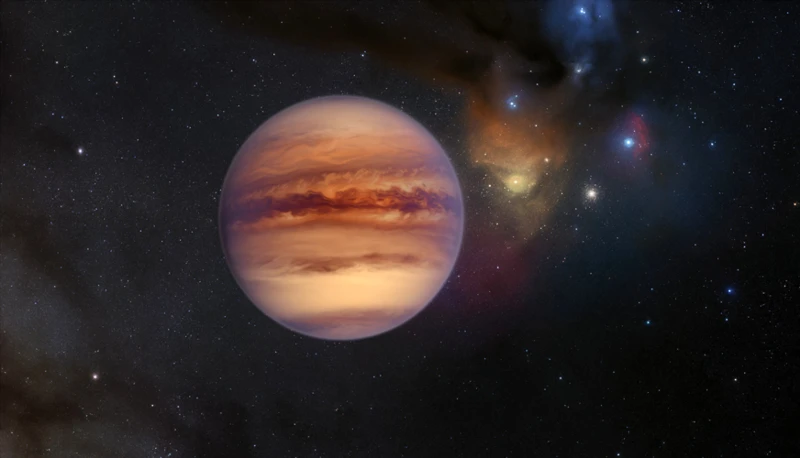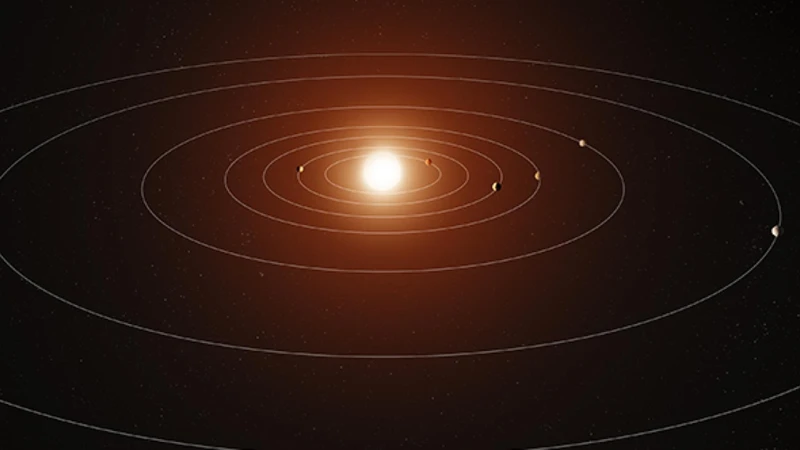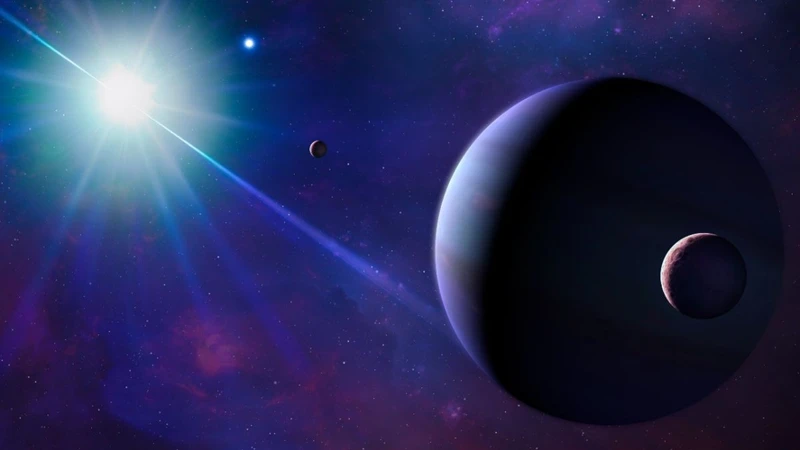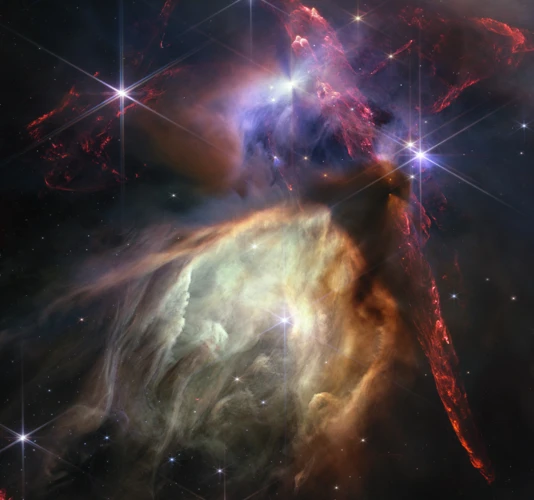From time immemorial, humans have gazed up at the night sky, wondering if there could be other worlds out there, just like our own. The quest to find these elusive exoplanets, planets that orbit stars beyond our solar system, has captivated the imagination of scientists and stargazers alike. With each discovery, we inch closer to unraveling the mysteries of our vast universe. In this article, we will delve into the fascinating world of exoplanets, exploring their definition, characteristics, and the methods used to detect them. We will also explore the groundbreaking missions like Kepler and the upcoming James Webb Space Telescope, that have revolutionized our understanding of these distant worlds. We will discuss the search for habitable exoplanets and the tantalizing possibility of finding extraterrestrial life. Join us on this interstellar adventure as we venture into the unknown and unravel the secrets of worlds beyond our own.
Contents
- What are Exoplanets?
- Methods of Detection
- The Kepler Mission
- Other Exoplanet Missions
- The Search for Habitable Worlds
- Conclusion
-
Frequently Asked Questions
- How many exoplanets have been discovered so far?
- Can exoplanets support life?
- What methods are used to detect exoplanets?
- What is the transit method?
- How does the radial velocity method work?
- What is direct imaging?
- What is the Kepler mission?
- What are some key discoveries made by the Kepler mission?
- What is the TESS mission?
- What is the James Webb Space Telescope?
- References
-
Frequently Asked Questions
- How many exoplanets have been discovered so far?
- What is the most common method used to detect exoplanets?
- Can we directly image exoplanets?
- How does the radial velocity method work?
- What is the Kepler mission?
- What were some of the key discoveries made by the Kepler mission?
- What is the TESS mission?
- What is the James Webb Space Telescope?
- What is the habitable zone?
- Are there any exoplanets that could potentially support life?
- References
- Read More
What are Exoplanets?

Exoplanets, also known as extrasolar planets, refer to planets that exist outside of our solar system, orbiting around stars other than our sun. These distant worlds have captivated astronomers and astrophysicists, offering a glimpse into the vast possibilities of planetary systems beyond our own. One defining characteristic of exoplanets is their location beyond our solar system. They are located within their respective stellar systems, similar to how planets in our solar system revolve around the sun. However, the stars hosting exoplanets may vary widely in size, temperature, and composition. Exoplanets come in a variety of sizes, ranging from giants several times the size of Jupiter to smaller rocky planets similar in size to Earth. Researchers have classified exoplanets into different categories based on their characteristics, such as hot Jupiters, super-Earths, and Earth-like exoplanets. These classifications help scientists better understand the diverse nature of exoplanets and how they compare to the planets in our own solar system. The discovery of exoplanets has helped reshape our understanding of the universe and has opened up new possibilities for finding habitable worlds and potential indications of extraterrestrial life.
Definition
Exoplanets, in the context of astronomy, are defined as planets that exist outside of our solar system, orbiting around stars other than our sun. The term “exoplanet” is derived from the combination of “extra” meaning outside and “planet” referring to a celestial body that orbits a star. The discovery of exoplanets has opened new avenues for scientists to study and understand planetary systems beyond our own. To be classified as an exoplanet, a celestial body must meet certain criteria. First, it must be in orbit around a star, similar to the way planets in our solar system orbit around the sun. Second, it must have enough mass to assume a round shape, due to its own gravity. This distinguishes exoplanets from smaller objects like asteroids or comets. Finally, exoplanets must not be a satellite or moon orbiting a planet. These criteria help astronomers differentiate between various celestial objects and identify which ones are indeed exoplanets. The study of these distant worlds, with their unique compositions and environments, provides valuable insights into the formation and evolution of planetary systems in the universe.
Unveiling Zodiac Secrets
Characteristics
The characteristics of exoplanets can vary greatly depending on their size, composition, and distance from their host star. These factors play a significant role in determining the conditions and potential habitability of these distant worlds. One notable characteristic is the size of the exoplanet. They can range from being several times larger than Jupiter to smaller rocky planets similar in size to Earth. The composition of exoplanets is also diverse, with some having a predominantly gas-based composition, like Jupiter, while others may have a rocky surface, potentially conducive to supporting life as we know it. Another important characteristic is the distance between an exoplanet and its host star. This distance, known as the orbital radius, affects the temperature and climate of the exoplanet. For example, planets located within the habitable zone, also known as the Goldilocks zone, have the potential to support liquid water and potentially life. Other factors, such as the exoplanet’s atmosphere and the presence of moons or rings, can also impact its characteristics and potential habitability. Scientists study these various characteristics to gain insights into the nature and conditions of exoplanets and to identify potential candidates for further exploration and investigation.
Importance of Moon Signs in Astrology: Exploring Emotions and Inner Self
Methods of Detection

Methods of Detection when it comes to finding exoplanets have evolved over time, driven by technological advancements and a deep curiosity to explore the unknown. Here are three primary methods used by astronomers to detect exoplanets:
- Transit Method: This method involves detecting exoplanets by monitoring the slight dimming of a star’s light as a planet passes in front of it. This periodic dimming indicates the presence of a planet and provides valuable information about its size, orbit, and distance from the star. The Kepler mission successfully utilized this method to discover thousands of exoplanets.
- Radial Velocity Method: In this method, astronomers observe the slight wobble or shift in a star’s position caused by the gravitational pull of an orbiting exoplanet. By measuring the changes in the star’s radial velocity, scientists can determine the presence and properties of the exoplanet, such as its mass and distance from the star. This method has been instrumental in detecting a large number of exoplanets.
- Direct Imaging: Direct imaging involves capturing actual images of exoplanets. This method is challenging because planets are much dimmer than the stars they orbit, making it difficult to visually separate them. However, advancements in technology, such as adaptive optics and coronagraphs, have allowed astronomers to directly image some larger, more distant exoplanets.
Each method has its strengths and limitations, but together they have helped exponentially increase our understanding of the diversity and prevalence of exoplanets. Scientists continue to refine and develop new techniques for exoplanet detection, paving the way for exciting discoveries in the future.
Transit Method
The transit method is one of the primary techniques used by astronomers to detect exoplanets. In this method, scientists observe a star and look for regular, periodic dips in its brightness. These dips occur when an exoplanet passes in front of its host star, causing the star’s light to dim. By carefully measuring and analyzing these changes in brightness, scientists can infer the presence of an exoplanet. The transit method provides valuable information about an exoplanet’s size, orbit, and distance from its host star. This technique is particularly effective for discovering exoplanets that are relatively close to their host stars and have orbits aligned in a way that causes them to transit across the face of the star as seen from Earth. To enhance the accuracy of measurements, astronomers often use telescopes equipped with high-precision instruments capable of detecting even the slightest changes in brightness. The transit method has been instrumental in the discovery of thousands of exoplanets, including some that are similar in size and composition to Earth. By examining the data obtained through this method, scientists can gain insights into the diversity and distribution of exoplanets in our galaxy. It is worth mentioning that while the transit method is widely used and successful, it does have certain limitations. For example, it is biased towards detecting exoplanets with relatively short orbital periods and those that are large enough to cause noticeable dips in brightness. Nonetheless, the transit method remains an invaluable tool in the hunt for exoplanets and has revolutionized our understanding of the cosmos.
Radial Velocity Method
The Radial Velocity Method, also known as the Doppler Spectroscopy Method, is a technique used to detect exoplanets by observing changes in the radial velocity of a star. This method relies on the principle that a star and its orbiting exoplanet are gravitationally bound to each other, causing both to orbit a common center of mass. As the exoplanet orbits the star, its gravitational pull causes the star to wobble slightly, resulting in periodic shifts in the star’s spectrum.
To detect these radial velocity variations, astronomers use spectrographs to measure the star’s spectrum. When the star is moving towards Earth, its spectral lines are slightly shifted towards shorter wavelengths (blueshift), and when it is moving away, the lines are shifted towards longer wavelengths (redshift). By analyzing these spectral shifts over time, scientists can infer the presence of an exoplanet.
The sensitivity of the Radial Velocity Method increases with the size and mass of the exoplanet. Larger exoplanets with greater gravitational pulls induce larger radial velocity variations in their host star. However, this method is more effective for detecting massive exoplanets, like gas giants, than smaller rocky planets.
One of the limitations of the Radial Velocity Method is that it can only provide information about the minimum mass of the exoplanet. This is because the degree of the star’s wobble is determined by the mass of the exoplanet and its inclination angle relative to our line of sight, which is unknown. Additionally, the Radial Velocity Method is prone to false positives and false negatives, requiring follow-up observations and confirmation techniques to validate the presence of an exoplanet.
In recent years, advancements in technology and instrument precision have allowed astronomers to detect smaller, Earth-sized exoplanets using the Radial Velocity Method. This method continues to play a crucial role in the hunt for exoplanets and has contributed significantly to our current knowledge of the diverse planetary systems beyond our own.
The Radial Velocity Method is an important tool used by astronomers to detect exoplanets by observing the variations in a star’s radial velocity. Its ability to detect both gas giants and smaller rocky planets has helped expand our understanding of the universe and brings us closer to answering the age-old question of whether we are alone in the cosmos.
Direct Imaging
Direct imaging is a method used to detect exoplanets by capturing actual images of these distant worlds. Unlike other methods that rely on indirect observations, direct imaging allows astronomers to directly observe the reflected light from exoplanets. This technique is particularly useful for detecting and studying larger exoplanets that orbit far from their parent stars. Direct imaging is achieved using advanced telescopes equipped with specialized instruments and techniques. One such technique is known as high-contrast imaging, which involves blocking out the bright light from the host star in order to unveil the much fainter light emitted by the exoplanet. This is achieved by using devices like coronagraphs or adaptive optics, which help mitigate the blurring effect caused by Earth’s atmosphere. With advancements in technology, astronomers have been able to capture stunning images of exoplanets, showcasing their unique features and atmospheric compositions. Direct imaging has also allowed scientists to study the orbits, temperatures, and compositions of these exoplanets more accurately. However, direct imaging does have its limitations, as it mainly detects larger exoplanets with wider orbits. Additionally, the glare from the host star can still pose challenges in capturing clear images of the exoplanets. Nonetheless, direct imaging remains an important tool in our quest to understand the vast and diverse exoplanet population within our galaxy and beyond.
The Kepler Mission

The Kepler Mission, launched by NASA in 2009, was a groundbreaking endeavor designed to discover exoplanets using the transit method. This method involves observing slight dips in a star’s brightness as a planet passes in front of it, blocking a fraction of the star’s light. By closely monitoring the light curve of a star, scientists can identify the presence of exoplanets and gather valuable information about their size, orbit, and even potential composition. During its initial mission, Kepler observed a small patch of the sky in the constellation Cygnus, focusing on approximately 150,000 stars. Over the course of its mission, Kepler detected thousands of exoplanet candidates, including Earth-like planets within the habitable zone of their stars. One of the most significant discoveries made by Kepler was the prevalence of exoplanets in our galaxy, hinting at the existence of billions of potentially habitable worlds. Unfortunately, in 2013, Kepler’s primary mission ended due to mechanical failures. However, the mission’s legacy continues through its data, which is being analyzed by scientists to this day. The Kepler Mission revolutionized our understanding of exoplanets and paved the way for future missions dedicated to exploring the cosmos and unraveling the mysteries of our universe.
The discovery of exoplanets through the Kepler Mission transformed our understanding of the sheer vastness and diversity of the universe.
Overview
The Kepler Mission, launched by NASA in 2009, is a space observatory designed specifically to search for exoplanets. Its primary objective was to determine the frequency of Earth-sized planets in our galaxy and to assess their potential for habitability. The mission successfully achieved this goal by using the transit method to detect exoplanets. The transit method involves measuring the slight dip in a star’s brightness when an exoplanet passes in front of it, causing a small decrease in the amount of light reaching the telescope. By observing these regular dips in brightness, scientists can infer the presence of exoplanets and gather information about their size and orbits.
The Kepler Mission was a resounding success, detecting thousands of exoplanet candidates and confirming the existence of over 2,800 exoplanets. Among the most significant discoveries made by Kepler was the identification of planets within the habitable zone of their host stars. These are the regions around a star where conditions might be suitable for the existence of liquid water, a key ingredient for life as we know it. The data collected by the Kepler Mission revolutionized our understanding of exoplanets and paved the way for further exploration and research.
In addition to its primary mission, the Kepler spacecraft also observed other astrophysical phenomena, such as supernovae, variable stars, and even galaxies beyond our own. Its findings have contributed to a wide range of scientific studies and have significantly expanded our knowledge of the universe. Unfortunately, in 2018, the spacecraft ran out of fuel and officially retired. However, its legacy continues through the data it collected, which are still being analyzed by scientists worldwide.
Key Discoveries
The exploration of exoplanets has yielded numerous key discoveries that have shaped our understanding of the universe and expanded our knowledge of planetary systems. One of the most significant and groundbreaking discoveries is the existence of exoplanets within the habitable zone of their host stars, often referred to as the “Goldilocks zone.” This zone is the region around a star where conditions may be just right for the presence of liquid water, a crucial ingredient for life as we know it. The discovery of exoplanets within the habitable zone has ignited the imagination of scientists and the public alike, as it suggests the possibility of worlds that could potentially support life. Another noteworthy finding is the abundance of exoplanets in the galaxy. Observations have revealed that exoplanets are common, with estimates suggesting that there may be billions of exoplanets in our galaxy alone. This has raised the tantalizing prospect that there could be countless Earth-like planets, increasing the chances of finding habitable environments and potentially habitable exoplanets. The discovery of exoplanetary systems with multiple planets has challenged our previous understanding of planet formation. These systems, known as exoplanetary systems, can be quite complex, showcasing a variety of planet sizes and orbital configurations. The exploration of these systems has provided valuable insights into the formation and evolution of planetary systems, shedding light on their diversity and dynamics. These key discoveries have propelled the field of exoplanet research forward, shaping our understanding of planetary systems beyond our own. They have sparked renewed interest and enthusiasm in the search for life beyond Earth, fueling further investigations and the development of future space missions.
Other Exoplanet Missions

Other than the groundbreaking Kepler mission, there have been several other notable missions dedicated to the discovery and study of exoplanets. One of these missions is the Transiting Exoplanet Survey Satellite (TESS). Launched in 2018, TESS is designed to scan the entire sky, searching for exoplanets using the transit method. The telescope on board TESS looks for tiny dips in a star’s brightness, indicating the presence of an exoplanet passing in front of it. TESS has already made significant discoveries, including multiple exoplanet systems and even a few potentially habitable exoplanets. Another mission on the horizon is the James Webb Space Telescope (JWST), set to launch in the near future. JWST will be the most powerful space telescope ever built, equipped with advanced instruments to study the atmospheres of exoplanets, analyze their compositions, and search for signs of habitability and life. With its unparalleled capabilities, JWST is expected to revolutionize our understanding of exoplanets and their potential for hosting life. These missions, along with others in development, demonstrate our unwavering commitment to unravelling the mysteries of exoplanets and expanding our knowledge of the universe.
The TESS Mission
The Transiting Exoplanet Survey Satellite (TESS) mission is a NASA-led project designed to search for exoplanets using the transit method. Launched in April 2018, TESS has been instrumental in expanding our knowledge of exoplanets. TESS surveys the entire sky in search of planets orbiting the brightest stars in our vicinity, which are ideal candidates for further observation and research. The main objective of the TESS mission is to discover exoplanets that are much closer to Earth than those detected by previous missions. By doing so, TESS provides an opportunity to study these exoplanets in more detail, including their atmospheres and potential for habitability. TESS uses four wide-angle cameras to monitor the brightness of more than 200,000 stars, looking for slight, periodic dips in their brightness caused by exoplanets passing in front of them. These dips, known as transits, provide valuable information about the size, orbit, and composition of the exoplanets. TESS has already made significant discoveries, including the identification of the smallest exoplanet to date, and has provided important data for further observations using ground-based telescopes and upcoming missions. With its novel approach and wide coverage of the sky, the TESS mission continues to unlock the secrets of exoplanets and pave the way for future advancements in exoplanet research.
The James Webb Space Telescope
The James Webb Space Telescope (JWST) is an upcoming space observatory that holds great promise for the study of exoplanets and a wide range of astronomical phenomena. This revolutionary telescope, scheduled to launch in October 2021, is a joint project of NASA, the European Space Agency (ESA), and the Canadian Space Agency (CSA). One of the main objectives of the JWST is to investigate exoplanet atmospheres and search for signs of habitability and even life beyond Earth. The telescope’s advanced technology and precision instruments will enable scientists to analyze the composition of exoplanet atmospheres and identify key molecules, such as water vapor, methane, and carbon dioxide. This information will provide crucial insights into the potential habitability of these distant worlds. The JWST will utilize its powerful suite of instruments, including the Near Infrared Camera (NIRCam) and the Near Infrared Spectrograph (NIRSpec), to observe exoplanets in unprecedented detail. By studying the atmospheres of exoplanets, the JWST aims to answer fundamental questions about the formation and evolution of planetary systems, as well as the potential for life beyond our solar system. With its improved sensitivity and larger mirror, the JWST will be capable of observing exoplanets that are smaller, fainter, and more distant than ever before. This groundbreaking telescope represents a significant milestone in the search for exoplanets and our understanding of the universe. The JWST holds the potential to reveal new insights into the nature of exoplanets, bringing us closer to answering one of the most profound questions humanity has ever asked: Are we alone in the universe?
In this quest for understanding, the unveiling of the James Webb Space Telescope is eagerly awaited. Science enthusiasts and astronomers are excitedly awaiting the discoveries this cutting-edge telescope will make, revealing even more secrets of the cosmos.
The Search for Habitable Worlds

The search for habitable worlds is a crucial focus of exoplanet research. Scientists are eager to identify planets within the habitable zone, also known as the Goldilocks zone, where conditions might be suitable for the existence of liquid water—the essential building block for life as we know it. The habitable zone is determined by a combination of factors, including the star’s temperature, size, and brightness, as well as the planet’s distance from the star. A planet too close to its star would be scorched by intense heat, while one too far away would be frozen, making it inhospitable to life. Exoplanet hunting missions such as Kepler and the upcoming James Webb Space Telescope have played a significant role in identifying potentially habitable worlds. Kepler has identified numerous exoplanets orbiting within the habitable zone, some of which share similarities with Earth in terms of size and composition. These discoveries offer hope that there may be Earth-like exoplanets capable of harboring life beyond our solar system. However, it is important to note that just because a planet is located within the habitable zone does not guarantee the presence of life. Other factors, such as the planet’s atmosphere and geological activity, also play a crucial role in determining a planet’s habitability. The search for habitable worlds is an ongoing endeavor, driven by our innate curiosity to unravel the mysteries of the cosmos and answer the age-old question: Are we alone in the universe?
HTML or list:
– The habitable zone is the region where conditions might be suitable for the existence of liquid water.
– Factors influencing the habitable zone include the star’s temperature, size, and brightness, as well as the planet’s distance from the star.
– Kepler and the James Webb Space Telescope have been instrumental in identifying potentially habitable worlds.
– Discoveries within the habitable zone offer hope for finding Earth-like exoplanets capable of supporting life.
– However, other factors, such as atmosphere and geological activity, also influence a planet’s habitability.
– The search for habitable worlds continues, driven by our desire to answer the question of extraterrestrial life.
Definition of Habitable Zone
The habitable zone, also known as the Goldilocks zone, refers to the region around a star where conditions are just right for liquid water to exist on the surface of a planet. This zone is not too hot, where water would evaporate, nor too cold, where water would freeze solid. It is the range of distances from a star where a planet could potentially support life as we know it. The habitable zone is determined by several factors, including the star’s temperature, size, and brightness. Stars that are similar to our sun have habitable zones located at specific distances, ensuring that the planet receives enough energy to maintain a stable climate. However, it is important to note that the concept of the habitable zone is not solely dependent on the presence of liquid water. Other factors, such as a planet’s atmosphere and composition, also play crucial roles in determining its habitability. Scientists continue to refine our understanding of the habitable zone as new exoplanets are discovered and studied, providing insights into the conditions required for life to thrive beyond our solar system.
Exoplanets in the Habitable Zone
Exoplanets in the habitable zone, also known as the Goldilocks zone, refer to planets that orbit their host stars at a distance where conditions may be just right to support liquid water on their surfaces. The habitable zone is the region around a star where the temperature is neither too hot nor too cold to sustain liquid water – a key ingredient for life as we know it. These exoplanets have the potential to harbor environments that could support the existence of life forms. Identifying exoplanets in the habitable zone is a challenging task for astronomers. It requires a combination of various factors, including the star’s size, temperature, and brightness, as well as the exoplanet’s distance from the star and its atmospheric conditions. The discovery of exoplanets in the habitable zone has generated great excitement within the scientific community, as it brings us one step closer to answering the age-old question of whether we are alone in the universe. These potentially habitable exoplanets serve as targets for further exploration and investigation, with future missions aimed at studying their atmospheres and searching for signs of life. It is through the study of exoplanets in the habitable zone that scientists hope to gain insights into the conditions necessary for life to arise and thrive elsewhere in the vast expanse of space, expanding our understanding of the possibilities of life beyond Earth.
Potential for Life
The search for exoplanets is not only driven by curiosity about distant worlds, but also by the desire to find planets capable of hosting life. When discussing the potential for life on exoplanets, scientists often refer to the concept of the habitable zone, also known as the Goldilocks zone. This refers to the region around a star where conditions are just right for liquid water to exist on a planet’s surface, a key ingredient for life as we know it. However, the potential for life on exoplanets is not solely dependent on their location within the habitable zone. Other factors such as the planet’s atmosphere, composition, and the presence of essential elements also play a crucial role. For example, the presence of an atmosphere containing molecules such as oxygen, carbon dioxide, and methane could provide conditions conducive to supporting life. The discovery of exoplanets with potential signs of habitability has fueled excitement and speculation about the existence of extraterrestrial life. While no direct evidence of life outside of Earth has been found to date, the search for habitable exoplanets continues to be an active area of research, and future missions like the James Webb Space Telescope hold the promise of further unraveling the mysteries of the universe and potentially discovering signs of life beyond our solar system.
Conclusion

In conclusion, the search for exoplanets has revolutionized our understanding of the universe and our place in it. The discovery of these distant worlds has not only expanded our knowledge of planetary systems but has also ignited our curiosity about the existence of life beyond Earth. Exoplanets, with their diverse characteristics and potential for habitability, have sparked scientific breakthroughs and fuel ongoing research in the field of astrobiology. Innovative methods of detection, such as the transit method, radial velocity method, and direct imaging, have enabled scientists to identify and study exoplanets in unprecedented detail. Missions like Kepler and upcoming missions like TESS and the James Webb Space Telescope continue to push the boundaries of discovery, providing us with more data and insights into exoplanetary systems. As we continue to explore and study exoplanets, we may one day find evidence of life beyond our solar system, forever changing our understanding of the cosmos and our place within it. The quest for exoplanets continues to inspire wonder and awe, reminding us of the infinite possibilities that exist beyond our familiar celestial neighborhood.
Frequently Asked Questions

How many exoplanets have been discovered so far?
As of now, scientists have discovered over 4,500 confirmed exoplanets.
Can exoplanets support life?
While the potential for life on exoplanets is a fascinating topic, it is still largely unknown. Scientists are searching for planets within the habitable zone, where conditions may be suitable for the existence of liquid water, a key ingredient for life as we know it.
What methods are used to detect exoplanets?
Scientists employ various methods to detect exoplanets, including the transit method, radial velocity method, direct imaging, and gravitational microlensing.
What is the transit method?
The transit method involves observing a star and looking for slight decreases in brightness, indicating the passage of an exoplanet across the star’s face.
How does the radial velocity method work?
The radial velocity method measures the wobble of a star caused by the gravitational pull of an orbiting exoplanet. This wobble is detected through shifts in the star’s spectrum.
What is direct imaging?
Direct imaging involves capturing the actual image of an exoplanet by blocking out the glare of the host star. This method is challenging due to the vast difference in brightness between the star and the planet.
What is the Kepler mission?
The Kepler mission was a NASA space telescope that was dedicated to discovering exoplanets. It monitored a specific field of stars, looking for the telltale dip in brightness caused by exoplanets passing in front of them.
What are some key discoveries made by the Kepler mission?
The Kepler mission was highly successful, and some of its key discoveries include the identification of thousands of exoplanet candidates and the confirmation of many exoplanets within the habitable zone.
What is the TESS mission?
The TESS (Transiting Exoplanet Survey Satellite) mission is another NASA space telescope designed to search for exoplanets. It uses the transit method and monitors a larger area of the sky compared to Kepler.
What is the James Webb Space Telescope?
The James Webb Space Telescope (JWST) is an upcoming space observatory set to launch in 2021. It will significantly advance our understanding of exoplanets and their atmospheres, potentially providing crucial insights into their habitability.
References
Frequently Asked Questions

How many exoplanets have been discovered so far?
As of now, scientists have discovered over 4,400 exoplanets!
What is the most common method used to detect exoplanets?
The most common method used to detect exoplanets is the transit method. It involves observing a slight decrease in brightness as a planet passes in front of its star.
Can we directly image exoplanets?
Yes, while it is challenging, astronomers have developed techniques to directly image exoplanets using advanced telescopes.
How does the radial velocity method work?
The radial velocity method detects exoplanets by measuring the slight wobble in a star’s motion caused by the gravitational pull of an orbiting planet.
What is the Kepler mission?
The Kepler mission was a space telescope launched by NASA, specifically designed to discover exoplanets using the transit method.
What were some of the key discoveries made by the Kepler mission?
The Kepler mission was able to discover thousands of exoplanets, including some that are potentially habitable and Earth-like in size and composition.
What is the TESS mission?
The TESS mission is another space telescope launched by NASA. Its goal is to find exoplanets using the transit method, focusing on nearby and bright stars.
What is the James Webb Space Telescope?
The James Webb Space Telescope is an upcoming space telescope that will primarily focus on studying exoplanet atmospheres and searching for signs of habitability.
What is the habitable zone?
The habitable zone, also known as the “Goldilocks zone,” is the region around a star where conditions may be just right for liquid water to exist on the surface of an exoplanet.
Are there any exoplanets that could potentially support life?
While no definitive signs of extraterrestrial life have been found, there are several exoplanets within the habitable zone that have the potential for hosting life as we know it.
References
- There are more than 5000 worlds beyond our solar system …
- Exoplanets: Everything you need to know about the worlds …
- Exoplanets: Worlds beyond Our Solar System







